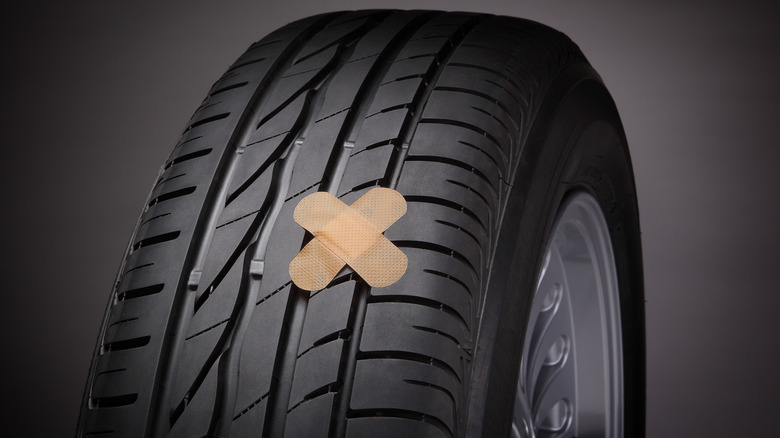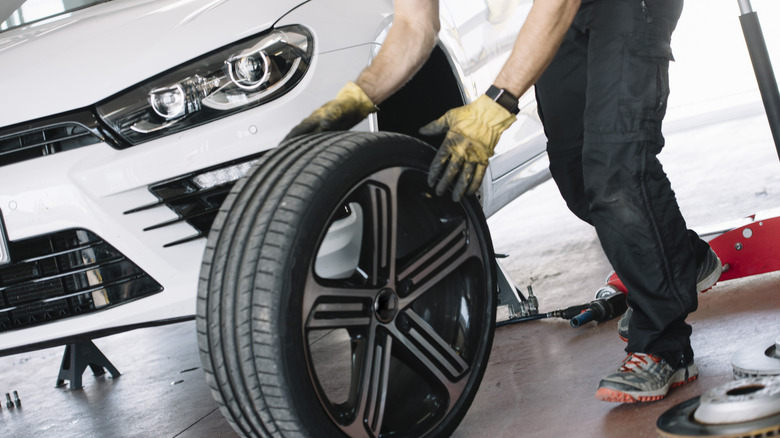How Much Does It Cost To Patch A Tire?
It's no secret that tires play a crucial role in the vehicle's functionality, which is why doing everything necessary to ensure they can effectively perform on the road isn't the kind of thing consumers want to take lightly. Regularly checking tire pressure and verifying proper alignment are not just methods to prolong their lifespan but should also be considered essential practices for a smooth driving experience. Neglecting things like a puncture or a hole isn't a good idea either, and such dilemmas need to be rectified quickly, and it helps to know how much it actually costs to patch a tire.
When it comes to the price of patching a tire, the exact fee will vary depending on the size of the damage and where it is located. The average price to repair a tire in 2023 varied from an estimated $20 to $50, but there are special cases that can run $100 or more. Fortunately, vehicle owners have options. For those who prefer a do-it-yourself approach, there are kits designed to provide a short-term resolution, and they can be found on platforms like Amazon, starting from around $5. They usually involve applying a patch on the exterior of the tire, enabling the driver to get back on the road temporarily until a more permanent solution can be applied. This temporary fix is usually followed by a professional repair, which involves an interior patch or, in some cases, tire replacement.
How to tell if a tire is patchable or not
For a tire to be patched, the damage typically needs to be specific and relatively minor, like a puncture that is less than 0.25 inches in diameter, often caused by small, sharp objects. The breach must also be located in the tread area, the part of the tire that makes contact with the road. This form of auto care is not advisable for any holes or openings on the tire's sidewall or shoulder, as these areas have a tendency to flex a lot, and the solution could very well not hold. Additionally, the tire can't have a significant amount of wear, and the tread depth should be above the minimum legal limit. It must also be clear of significant damage, such as deep cuts or large gashes. Previous repairs in the same area are another concern, as they can undermine the tire's integrity.
Certain types of tire issues are beyond the help of a patch and require the vehicle owner to buy new tires. These unfixable challenges, unfortunately, include any kind of puncture that is too big to be patched. Damage to the sidewall or shoulder is also irreparable. Any severe splits or breaks, especially those that expose the internal components like steel belts or fabric, cannot be safely repaired. Consumers should also be on the lookout for signs of severe wear, bulges, or blistering, as they are definitive indicators of structural compromise, and the tire must be replaced for safety reasons.
How long will a patched tire last?
You might be wondering if there is any kind of time limit when dealing with this temporary solution. The longevity of a tire after being patched depends on several factors, including the quality of the patch, the location of the repair, and how the tire is used. A patched tire can potentially last a decade, but it's important to note that a patch is far from anything resembling a permanent remedy. The lifespan of the patch isn't guaranteed, as it depends on a number of factors, such as the tire maintaining consistent air pressure, absence of further damage, and avoiding any extreme conditions. Frequent inspections are crucial to verify the resiliency of the patch and that the tire remains safe to use. While a patched tire can often get the job done for a considerable period, its ongoing status should be monitored closely to ensure continued safety on the road.
People should also realize that they can't just keep using the same fix over and over again. A tire can typically be patched twice safely, provided the places being repaired are located at different spots. The key factor is the distance between punctures, as they should not be within 6 inches of each other. Patching the same spot more than once is not an advisable game plan people should follow. If a small breach or hole happens again in the same location, replacing the tire becomes the only safe and smart option.


